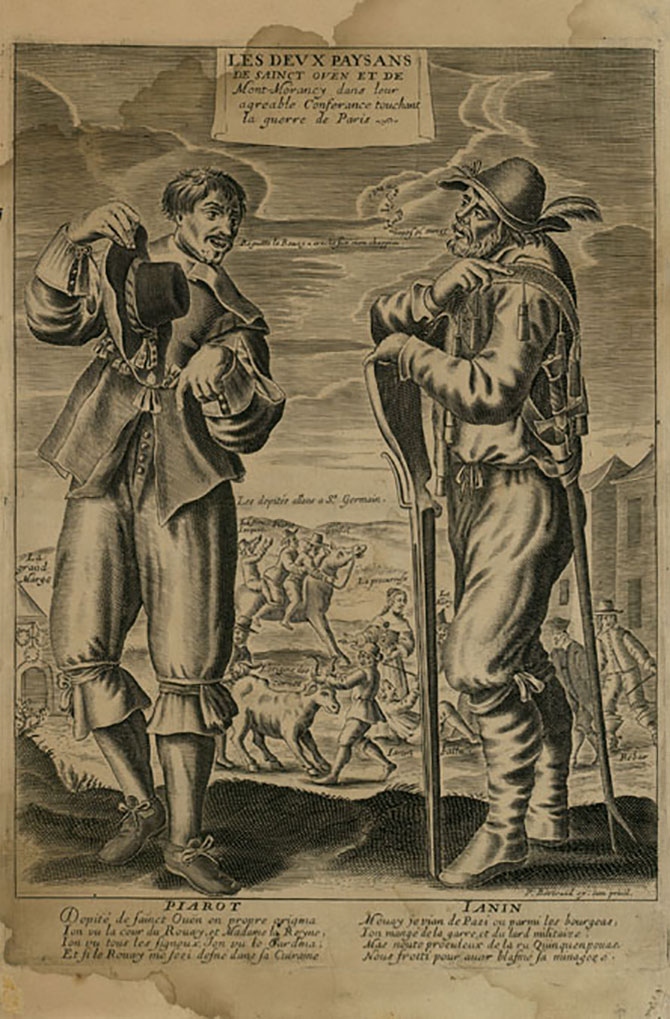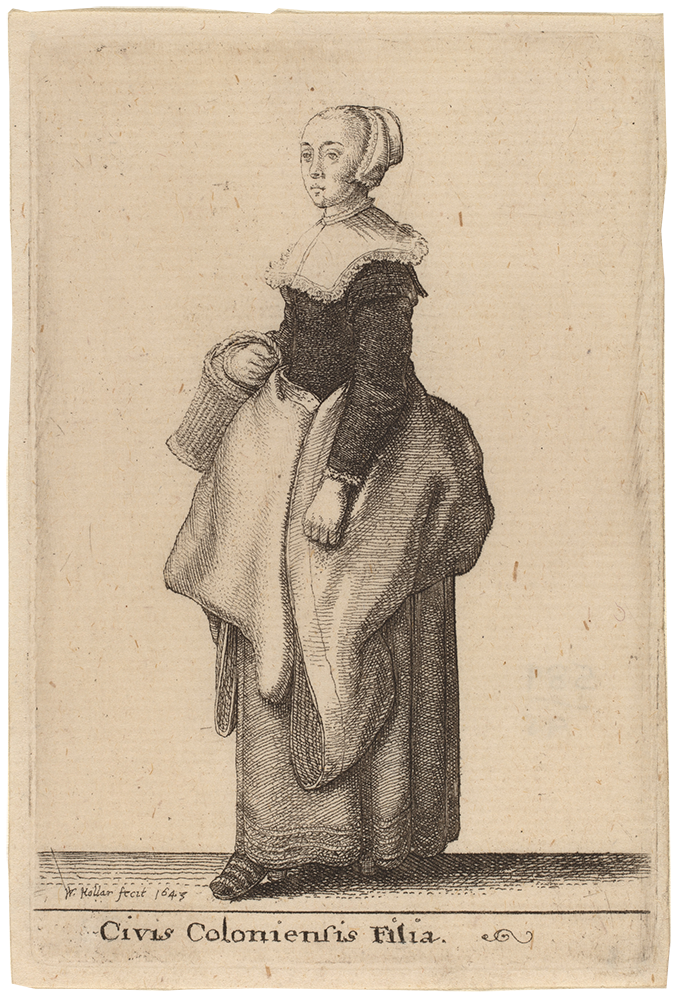This video was created by the New-York Historical Society Teen Leaders in collaboration with the Untold project.
NOTE: Because Thomas(ine) changed their gender identity throughout their lifetime, this life story uses they/them pronouns. Historical records list their name as either Thomas or Thomasine, depending on how they presented themselves at that time. This life story uses Thomas(ine).
Thomas(ine) Hall was born around the year 1600 in Newcastle-Upon-Tyne, England. Their parents named them Thomasine and raised them as a girl. When they turned twelve, they were sent to live with their aunt in London, where they “went clothed in women’s apparel.”
When Thomas(ine) was around twenty-four years old, their brother was drafted into the English army. Thomas(ine) decided to go with him. Thomas(ine) cut their hair, put on men’s clothing, and joined the army using the name Thomas. Thomas(ine) served in the army for a year. When their service was done, they settled in Plymouth, England. There they once again wore women’s clothing and went by the name Thomasine.
Thomas(ine) made a living crafting bone lace and doing other needlework, traditionally considered women’s work. Like other working-class people of their day, Thomas(ine) was interested in the opportunity for a new life in the English colonies of North America. They decided to take their chances in the colonies as an indentured servant. In late 1627 they put on men’s clothing and signed a contract with the name Thomas before setting out across the Atlantic Ocean.
When Thomas(ine) arrived in the colony of Virginia, they went to work for John Tyos on a small tobacco plantation in Virginia. At first, Thomas(ine) continued to dress as and perform the work of a man. But at some point, they started to dress as a woman and take on traditional women’s labor. John appears to have had no problem with this switch, as he later swore to the community at large that Thomas(ine) was a woman. But other members of the community were less comfortable with the change. There were rumors that Thomas(ine) had sex with a maid from another household. If Thomas(ine) was a man, this act was the crime of fornication, and they would have to stand trial. But if Thomas(ine) was a woman, there was no crime.
Three respected married women from the community took it upon themselves to inspect Thomas(ine)’s body to determine their sex. They decided that Thomas(ine) was definitely male but John disagreed. The situation got more complicated when John Atkins, another member of the community, proposed buying Thomas(ine)’s contract from John Tyos. John Atkins did not feel comfortable making the purchase unless he was sure of Thomas(ine)’s gender because that would determine the kind of work they could perform. Their gender would also affect the price of their contract. John Atkins appealed to a plantation owner in the community. The plantation owner interviewed Thomas(ine), who confessed that they had “a piece of flesh growing at the . . . belly as big as the top of [their] little finger,” but that they “had not the use of the man’s parts.”
Thomas(ine)’s testimony indicates that they were likely an intersex person. An intersex person is born with a combination of male and female genitalia. Thomas(ine) testified that they did not have full use of their penis. The plantation owner thought Thomas(ine)’s report was reasonable. He ordered Thomas(ine) to wear women’s clothing. John Atkins purchased Thomas(ine)’s labor contract, and they took up a position in his home as a woman laborer.
From that point forward, Thomas(ine) was required to wear the clothing of both sexes: the breeches and shirt of a man with the cap and apron of a woman.
The women who first inspected Thomas(ine) were unhappy with this decision. They conducted a second examination of Thomas(ine)’s body while Thomas(ine) was asleep. The women then invited John Atkins to inspect Thomas(ine)’s body as well. During this third examination, Thomas(ine) said they had “a piece of a hole.” This was their first reference to female genitalia. Their wording implies that, like their penis, their vagina was not fully functional. John Atkins and the three women searched Thomas(ine) for evidence of a vagina. When they could not find it, they went back to the plantation owner. The plantation owner reversed his decision and declared Thomas(ine) was a man and must wear men’s clothing.
At this point, the entire community was aware of Thomas(ine)’s story. Two more men examined Thomas(ine) on a public road. The men stripped Thomas(ine) of their clothing, pulled out their genitalia, and decided that Thomas(ine) was “a perfect man.” As far as the community was concerned, Thomas(ine)’s gender was settled. They decided to punish Thomas(ine) for pretending to be a woman.
Thomas(ine) appeared before the Quarter Court of Virginia in 1629. They shared their life story, explaining that they had lived as a man and as a woman. There was no understanding of gender fluidity or intersex identity in the colonial era, but something about Thomas(ine)’s testimony convinced the court that they were being genuine. The governor decided on an extraordinary verdict. Thomas(ine) was declared to be both a man and a woman. They would be required to wear the clothing of both genders: the breeches and shirt of a man, with the cap and apron of a woman. This was so “all the Inhabitants there may take notice” of Thomas(ine)’s unusual status.
The new clothing meant that Thomas(ine) would forever be marked as different in their community. But the court did not clear up any of the questions the community had about what work Thomas(ine) could do. At this point, Thomas(ine) seems to disappear from the official records, and there is no information on how their story ended. It is most likely that they moved to another community in the colonies, where they took on a new name and lived as either a man or a woman. Thomas(ine)’s story is an important case study in how sex, gender, and identity were expressed and policed in the English colonies.
Vocabulary
- bone lace: A kind of lace made using tools that were traditionally made from bone.
- breeches: Short trousers that fastened just below the knee.
- fornication: The crime of sexual intercourse between unmarried people.
- gender: The state of being male or female based on culture (like clothing) rather than body parts.
- indentured servant: A person under contract to work for another person for a definite period of time without pay, usually in exchange for transport to a new place.
- intersex: A person who is born with body parts that do not fit the typical definitions of a male or female body.
- Quarter Court: The criminal and civil court session held four times a year in rural colonial Virginia.
Discussion Questions
- In what circumstances did Thomas(ine) Hall identify as a man? In what circumstances did Thomas(ine) identify as a woman? What do Thomas(ine)’s choices reveal about the opportunities for men and women in the 1600s?
- Why were Thomas(ine) Hall’s neighbors so disturbed by their gender fluidity? Why do you think they were so anxious to preserve differences between the genders?
- What did the court’s verdict in Thomas(ine) Hall’s case mean for the rest of Thomas(ine)’s life in the colonies?
Suggested Activities
- APUSH Connections:
- 2.3 The Regions of British Colonies
- 2.7 Colonial Society and Culture
- AP Government Connection: 1.1: Ideals of democracy
- Use this life story in a lesson plan about life in the colonies to illustrate how there was very little room for difference in the social structure of the English colonies.
- Invite students to create an illustration of the costume Thomas(ine) Hall was ordered to wear by Governor John Potts, based on the pictured examples of colonial clothing. Then ask students to write about how this costume might have affected Thomas(ine)’s life going forward.
- It can be difficult for modern students to understand why Thomas(ine) Hall’s community was so concerned with gender identity. To help clarify the stakes of gender identity in colonial Virginia, pair this life story with Legislating Reproduction and Racial Difference.
- Connect Thomas(ine) Hall’s story with the modern debate over transgender rights—how does this more contemporary debate echo the historical one? What has changed?
- Teach this document together with Life Story: Weetamoo and discuss how different cultures responded to people who lived and worked outside gender norms.
- Pair this document with Life Story: Dennis and Hannah Holland and Life Story: Margaret Brent for a larger lesson about indentured servants in the Chesapeake colonies.
Themes
AMERICAN IDENTITY AND CITIZENSHIP; WORK, LABOR, AND ECONOMY








